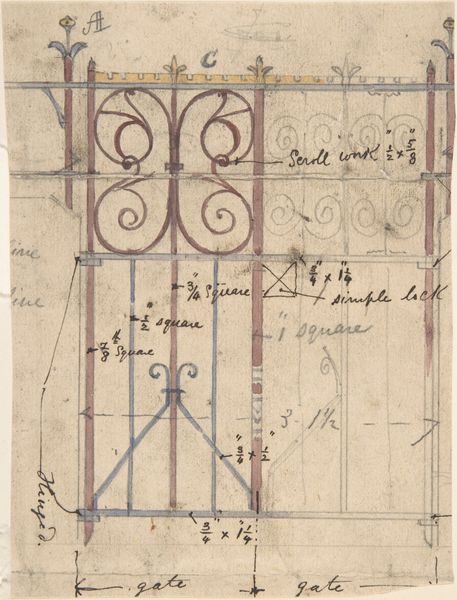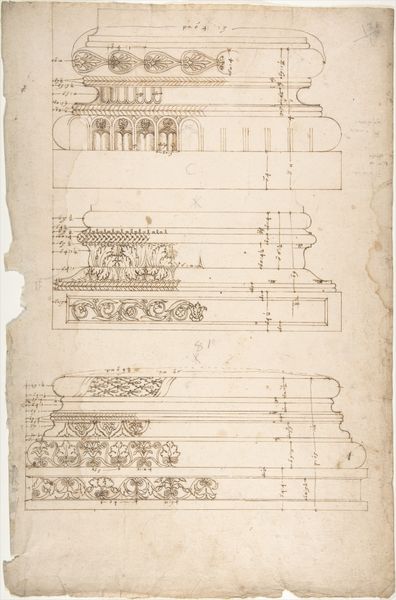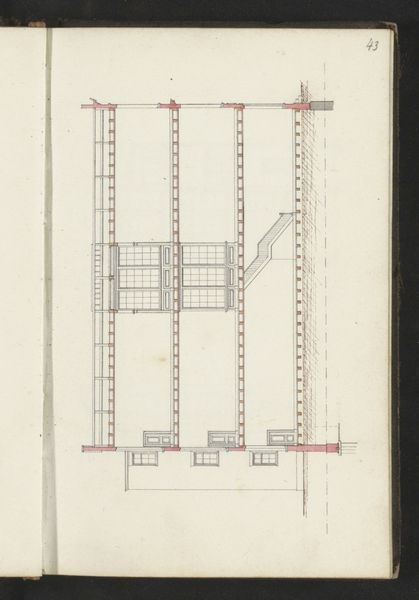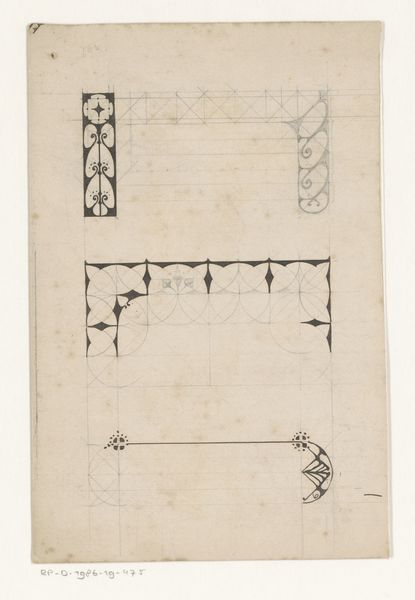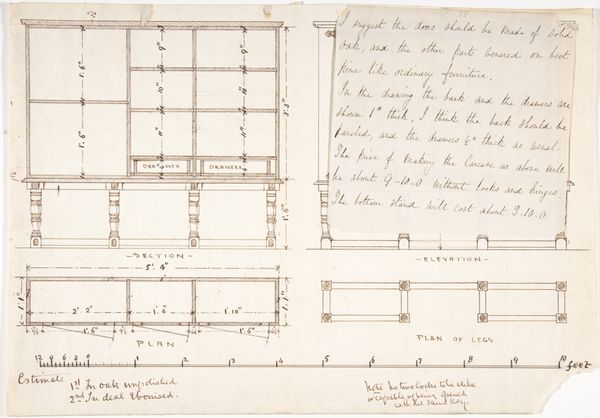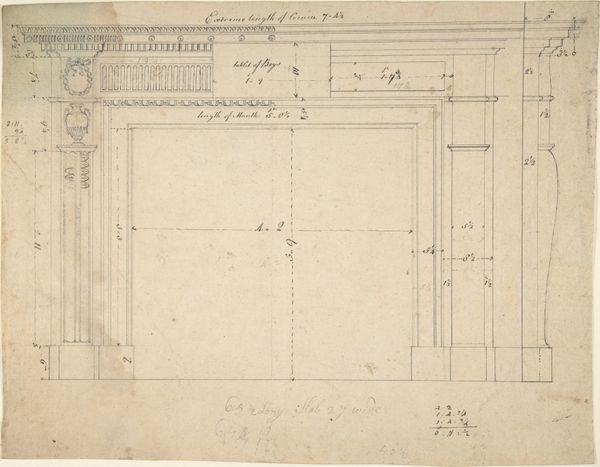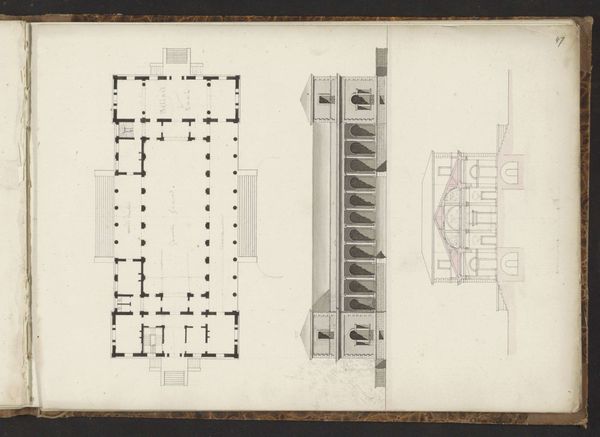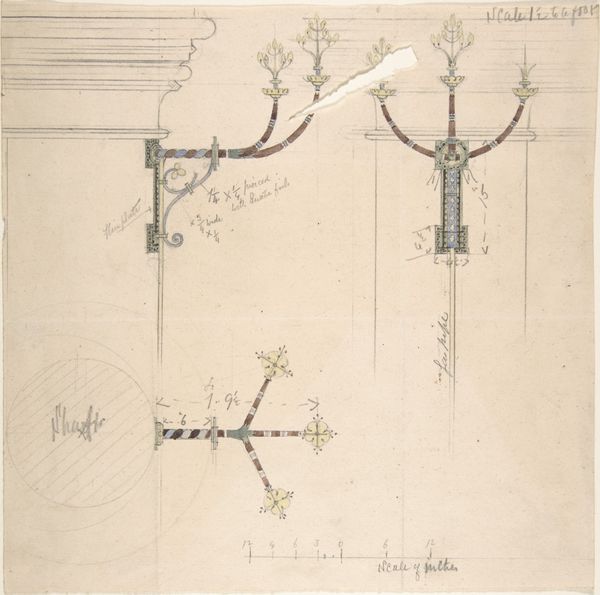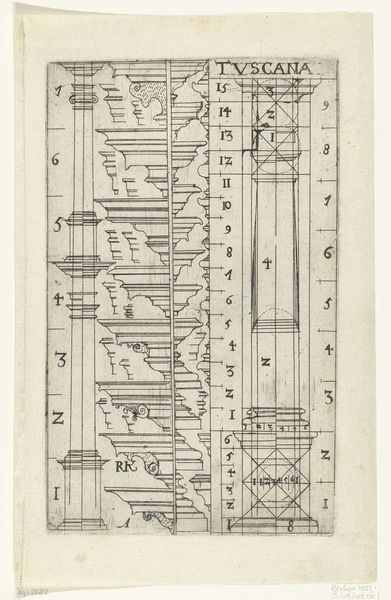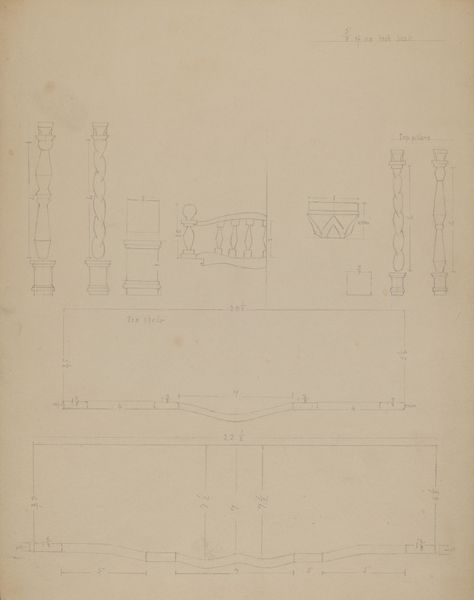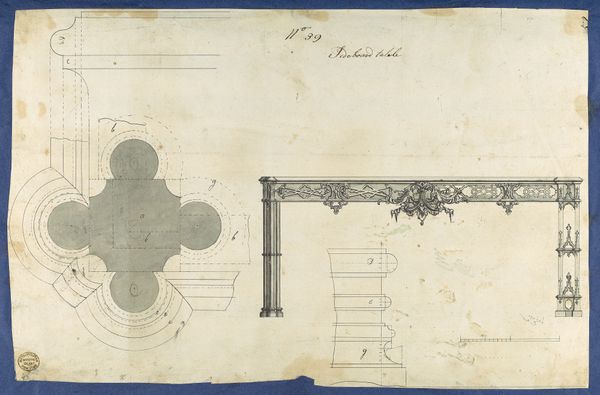
Design for an Iron Gate, Elevation and Plan 1875 - 1885
0:00
0:00
drawing, print, metal, pencil, architecture
#
drawing
# print
#
metal
#
arts-&-crafts-movement
#
architectural plan
#
geometric
#
pencil
#
architectural drawing
#
architecture
Dimensions: sheet: 7 1/16 x 4 1/2 in. (18 x 11.4 cm)
Copyright: Public Domain
Curator: Immediately, what strikes me about this preparatory drawing is the level of ornamentation, a clear dedication to beauty and intricate detail. Editor: Well, before we get lost in aesthetics, let's acknowledge what we're seeing: a design sketch from Richardson Ellson & Co. for an iron gate, dating from around 1875 to 1885, right in the thick of the Arts and Crafts movement. It's currently residing at The Met. Curator: "Residing"—I like that. It implies the drawing has found a home after a journey, much like the craftspeople who championed honest materials. I can imagine them toiling in workshops, forging metal into these elegant shapes. Doesn’t the geometric rigour hinted by pencil lines give way to almost whimsical floral embellishments on the upper crest? Editor: The so-called whimsicality shouldn't be divorced from its sociopolitical context. This was a direct reaction to the industrial revolution’s cold, mass-produced monotony. Ornamentation, particularly drawn from nature, was a deliberate choice to reclaim individuality and skill, pushing back against dehumanization through mechanization. It represents an ideal of accessible beauty in everyday life for everyone—not just the wealthy, even if often implemented for wealthier patrons in practice. Curator: Yes! And what do you make of the subtle washes of colour in the drawing? Hints of gold and green that probably wouldn't stand the test of time out in the street—like whispers of forgotten possibilities! Editor: Well, these choices probably served the goal of clarity for the design and commissioners involved in its realization, more than purely for aesthetic affect. And the fragility inherent in sketches on paper reflects a broader struggle of Arts and Crafts ideals grappling with capitalism and class structures. Curator: So, it's about more than just beautiful gates, isn't it? It’s about a yearning for a world crafted with care and intention. Editor: Precisely, and while admiring its delicate strokes, it's crucial to consider the historical forces that shaped this drawing and continue to echo into our present. Curator: True! This drawing makes me long for a garden sanctuary. Editor: While I appreciate the revolutionary ideas concerning labor practices that this sketch embodies.
Comments
No comments
Be the first to comment and join the conversation on the ultimate creative platform.
